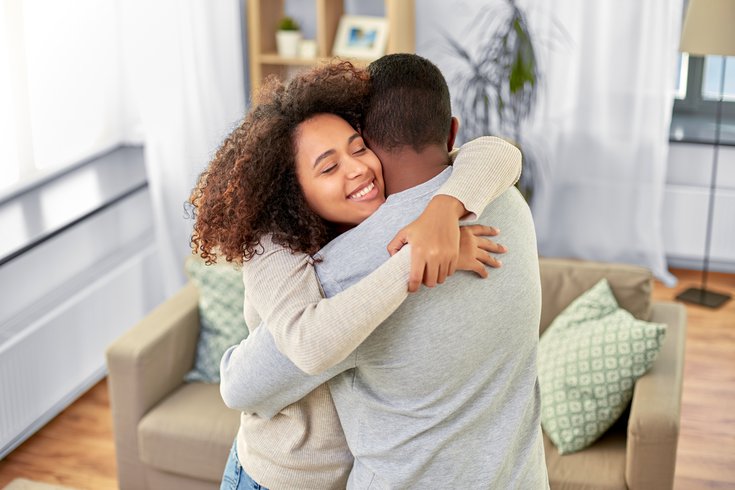
February 26, 2021
 Source/Image licensed from Ingram Image
Source/Image licensed from Ingram Image
The hug is one of the rare behaviors in life that feels good and is equally good for you
There are a number of behaviors that demonstrate the connection between our emotional and physical health, and advance our well-being. One such practice that stimulates a litany of positive benefits is the hug.
Yes, the science shows that hugging is good for you. Setting aside the current COVID-19 hiatus for hugging, which I will address shortly, there are an amazing amount of physical and psychological perks from a simple hug.
Further, experts suggest that regular hugs can help strengthen your relationships, a strong motivator for maintaining a healthy lifestyle I’ve cited countless times. A study published in the Journal of Social and Personal Relationships found that higher levels of routine affection were linked with greater satisfaction in one’s relationships.
They provide other benefits, too.
Research in the Journal of Psychological Science showed that hugging will decrease your risk of getting sick. The clinicians found that more-frequent hugs among sick participants predicted less-severe illness, and that hugging may effectively convey social support that protected against a rise in infection risk.
A study published in Behavioral Science described how scientists investigated the relationship between brief, warm, social and physical contact among cohabitating couples and blood pressure reactivity to stress in a sample of healthy adults.
A warm contact group underwent a 10-minute period of handholding, followed by a 20-second hug with their partner before being asked to complete a public speaking task. A no-contact group rested quietly for 10 minutes and 20 seconds prior to the public speaking task.
Individuals who in the warm contact group demonstrated lower systolic blood pressure, diastolic blood pressure, and heart rate increases during the speaking task.
The findings suggest that affectionate relationships with a supportive partner may contribute to lower reactivity to stressful life events and may partially mediate the benefit of marital support on better cardiovascular health.
According to PIH Health, a non-profit regional health care network in California, there are a range of additional benefits. Hugs can lower stress by reducing levels of the stress hormone cortisol. They can boost your mood and relieve symptoms of depression by increasing levels of dopamine and serotonin.
Plus, hugging reduces tension by relaxing muscles, increasing circulation and releasing endorphins in your body — which may even help soothe aches and pains. Finally, hugging can trigger the release of oxytocin which can cause stress hormones and heart rate to drop.
To many, hugging comes naturally and is a very comfortable transaction.
According to Swedish researchers, hugging is not only a part of greeting behavior, but also has its place as a display of empathy or gratitude. They suggest that experiences of hugging by parental figures in early childhood may make hugging more prevalent in adulthood. So, your predisposition to hug or not is likely influenced by what you observed growing up.
Personally, I'm good with hugging. As a dad, I've hugged my kids over the years. I love to hug my five-year-old grandson and my wife is a regular hug target. Pre COVID, professionally, I'd often do the handshake, pat-on-the-back half hug with guys I knew.
That said, I had no idea as to the elaborate classifications and the associated meanings behind hugs. It's fascinating.
Relationship expert Christine Keller has classified 20 different types of hugs, ranked them and explained the meaning of each. They range from the tight hug, when someone who loves you hugs you with all their power, to the side hug, typically used for friends and acquaintances. Others on Keller’s list include the bear hug, squeeze hug and the back hug.
The key seems to be understanding the context, your intent and contemplating what comes next. Like choosing the right club on the golf course.
Isolation, social distancing and quarantine have been hug-killers. Ironically though, if COVID has done anything, it has increased our collective desire for human contact, perhaps pushing even the non-huggers to embrace family or friends.
No doubt that even during COVID, hugging continues within families, but some have questioned the post-COVID future of social contacts such as the hand shake or hug.
The future of the hug is hard to determine. Before COVID, an upswing in hugging over the past several years would lean toward its continuation, as would the health and psychological benefits that seem to be rooted in our instinct to entwine. Most immediately are the questions that center on our ability to reinstitute the hug as the nation vaccinates its way to herd immunity.
Dr. Greg Poland, a vaccinologist and director of the Mayo Clinic’s Vaccine Research Group, says he does not recommend hugging when only one person involved has been vaccinated.
How about when both huggers are vaccinated? Poland says the answer really boils down to risk tolerance because there could still be risk. Poland says for those who want to begin hugging loved ones again, the safest way would be doing so while using the right mask and wearing it properly. Doing it outside would add another layer of protection, he says.
The hug is one of the rare behaviors in life that feels good and is equally good for you. Hugs are free and can be used to convey all sorts of feelings in a wide range of circumstances.
Think about it. From babies to the elderly and everyone in between. In your personal life, in business, in sports — the hug spans generations and permeates every aspect of life. All this while contributing to your health and well-being.
The hug is the ultimate bargain, one of life's most common, all-purpose tools. For now, use it safely and selectively. If you are not a hugger, start small, try to get comfortable and overcome those childhood influences. To everyone else, let's look forward to the time when hugs will flow without hesitation, and we can all reap the rewards.